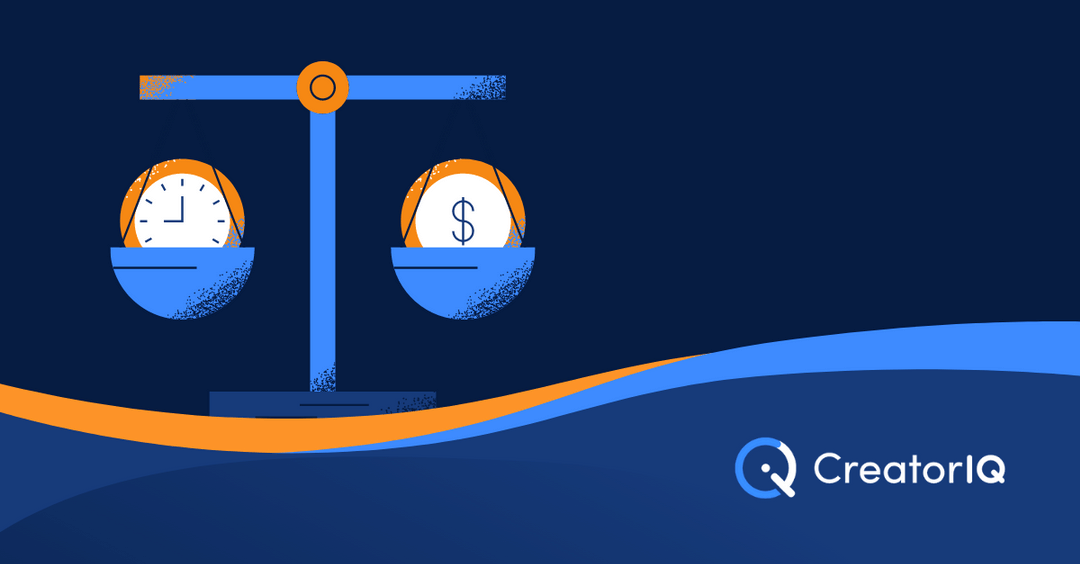Planning the budget for your influencer program is an important step that will dictate other key campaign decisions - from what type of influencers to contact, to the type of asset you’ll ask them to create. However, in an ever-evolving industry, influencer rates can vary widely depending on the platform, engagement rate, and whether the influencer has representation, to name just a few variables. So, where to begin? Keep reading to learn the basic elements of influencer partnership pricing, including different types of payment structures, requests that will drive up rates, and general benchmarks to reference as you plan out your budget.
A standard rule in influencer budgeting is to allocate $100 for every 10K followers. However, follower count is not the only variable that affects pricing. You’ll need to budget more depending on contract elements like exclusivity, usage and promotional rights, and additional partnership requirements like travel or an event appearance. Other considerations can include which platform you are partnering on, the number of posts, content format, content complexity, and the time that the content must stay live.
For example, a piece of video content that requires the influencer to shoot on location, edit into a social-friendly format, and share on their YouTube channel will cost substantially more than an Instagram story image showcasing a product that was shipped directly to the influencer’s home. As another example, you may want full usage rights to an influencer’s content across your email marketing materials, without crediting their social media account. This free & clear usage will cost much more than the right to simply re-post their image on your brand accounts with a credited tag.
Finally, it’s important to consider the platforms that you’d like to focus on as part of your influencer marketing strategy, and align your budget accordingly. Remember that there are different costs associated with each platform, so budgetary considerations are important to keep in mind during that campaign planning phase of your program
Platform (least-to-most expensive, in general):
- Twitter/Pinterest
- Blog
- Instagram/TikTok
- YouTube
Determining a ballpark figure for your program budget is important, but don’t forget to plan out how and when you’ll pay partners. Your payment model will largely be dependent on the maturity of your program. For example, a relatively new program may try out product seeding. In this model, there is no monetary payment beyond free product (or an experience), and you’ll mainly be working with Nano or Micro influencers.
From there, you may grow into the most traditional model where a set fee is established for a bundled set of deliverables. Check out our article on how to successfully negotiate this type of collaboration here.
Lastly, “pay-per-X” or affiliate models are a fast-growing area of the Creator Economy that many established teams pursue. Paying creators for the number of engagements, views, or conversions their content gains, or distributing affiliate links that share sale revenue with influencers, is a great way to build relationships in the marketplace and guarantee that your budget is going towards content that drives results.
PRO TIP: CreatorIQ's Campaign Planner allows teams to forecast campaign performance. This feature can help create an affiliate or pay-per-X budget strategy before any influencers are involved.
The goals of your campaign will also affect how much budget to allocate. Ask yourself, what metrics are most important to our goals, and what influencers can help us best meet them? For example, if your priority is brand awareness, you may plan to work with Macro and Mega influencers who can get the word out to more followers at once. In this case, you’d receive fewer posts for a higher budget (and if you really want to increase brand awareness to a specific audience, consider paid amplification via Dark Posts). If your team is more focused on conversions, Nano and Micro creators may be your best bet. A similar budget in this scenario will net a higher number of posts, but with potentially lower reach (but with a hyper-targeted, highly engaged audience, making this a similarly appealing option).
Keeping all of the above elements in mind, the below can serve as introductory benchmarks for influencer pricing:
- Nano influencers (>10,000 followers): ~$100 per post
- Micro influencers (10,000 - 100,000 followers): $100 - $1,000 per post
- Macro influencers (100,000 - 1,000,000 followers): $1,000 - $10,000 per post
- Mega influencers & celebrities (1M+ followers): $10K+ per post
The Creator Economy is ever-changing, and keeping up with all of the variables can be a bit intimidating. CreatorIQ’s full payment workflow tools can take the hassle of technical payment management off of your plate, leaving you free to focus on strategy & relationship building. Schedule a Product Demo with a platform specialist to learn more about the full suite of CreatorIQ suite of products designed to take your influencer program to the next level.


